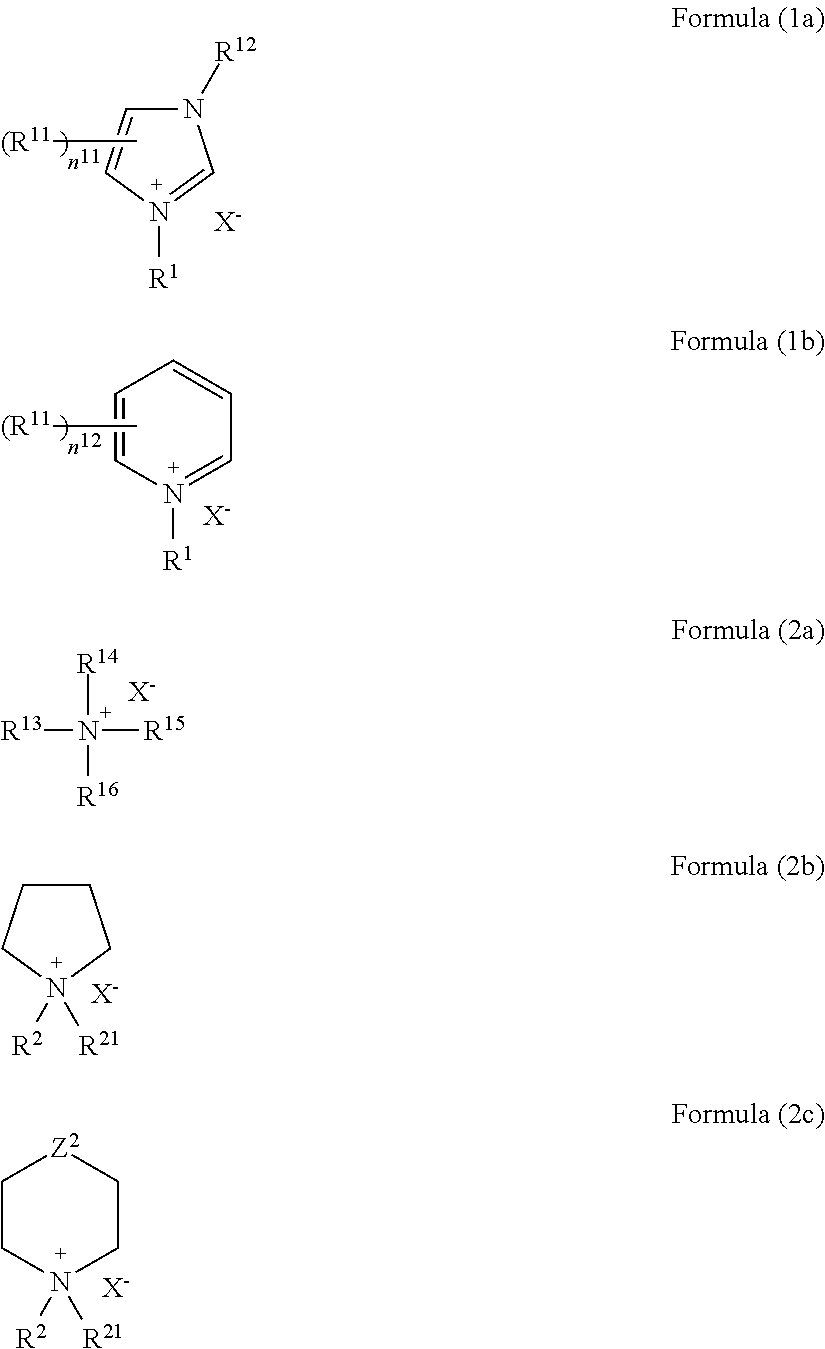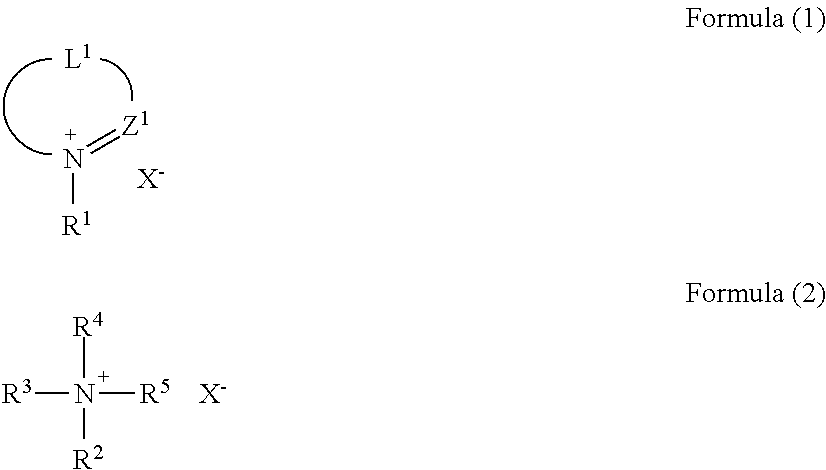Thermoplastic resin composition, method of producing thermoplastic resin composition, molded article of cellulose-reinforced resin, and method of producing molded article of cellulose-reinforced resin
a technology of thermoplastic resin and composition, which is applied in the field of thermoplastic resin composition, can solve the problems of easy re-aggregation, difficult control, and increase production cost, and achieve the effects of reducing production cost, enhancing reinforcement efficiency of thermoplastic resin, and increasing elastic modulus
- Summary
- Abstract
- Description
- Claims
- Application Information
AI Technical Summary
Benefits of technology
Problems solved by technology
Method used
Image
Examples
example 1
[0300]The cellulose-reinforced thermoplastic resin was produced by the following steps.
1) Preparing Step of Cellulose Composition
[0301]In an acetone solvent, 90 parts by mass of Cellulose A was dispersed and was mixed with 10 parts by mass of Ionic compound A, and then the mixture was left to stand in a covered container for 12 hours or more while stirring the mixture at a few hour intervals.
[0302]After that, the lid of the container was opened to evaporate the acetone solvent. After evaporation of most of the acetone solvent, the container was further stored for 12 hours or more in a thermostat at 80° C. in order to dehydrate.
2) Kneading Step of Cellulose Composition and Thermoplastic Synthetic Resin (production of Cellulose-Reinforced Thermoplastic Resin Composition)
[0303]A cellulose-reinforced thermoplastic resin composition was produced by feeding Thermoplastic synthetic resin B in a twin screw extruder [KZW15TW-45MG-NH, manufactured by Technovel Corporation] at outlet temperatu...
example 2
[0307]A cellulose-reinforced thermoplastic resin composition containing one kind of the thermoplastic synthetic resin obtained by the step 2) was produced without the step 3) in Example 1.
example 3
[0308]A cellulose-reinforced thermoplastic resin composition containing two kinds of the thermoplastic synthetic resins was prepared and produced in the same manner as in Example 2, except for blending 0.1 parts by mass of Ionic compound A with respect to 99.9 parts by mass of Cellulose A in the step 1) of Example 1, and employing, in place of Thermoplastic synthetic resin B, a resin in which Thermoplastic synthetic resin A and Thermoplastic synthetic resin B were mixed so as to be 499:1 in terms of ratio by mass.
PUM
| Property | Measurement | Unit |
|---|---|---|
| side length | aaaaa | aaaaa |
| area | aaaaa | aaaaa |
| length | aaaaa | aaaaa |
Abstract
Description
Claims
Application Information
 Login to View More
Login to View More - R&D
- Intellectual Property
- Life Sciences
- Materials
- Tech Scout
- Unparalleled Data Quality
- Higher Quality Content
- 60% Fewer Hallucinations
Browse by: Latest US Patents, China's latest patents, Technical Efficacy Thesaurus, Application Domain, Technology Topic, Popular Technical Reports.
© 2025 PatSnap. All rights reserved.Legal|Privacy policy|Modern Slavery Act Transparency Statement|Sitemap|About US| Contact US: help@patsnap.com



